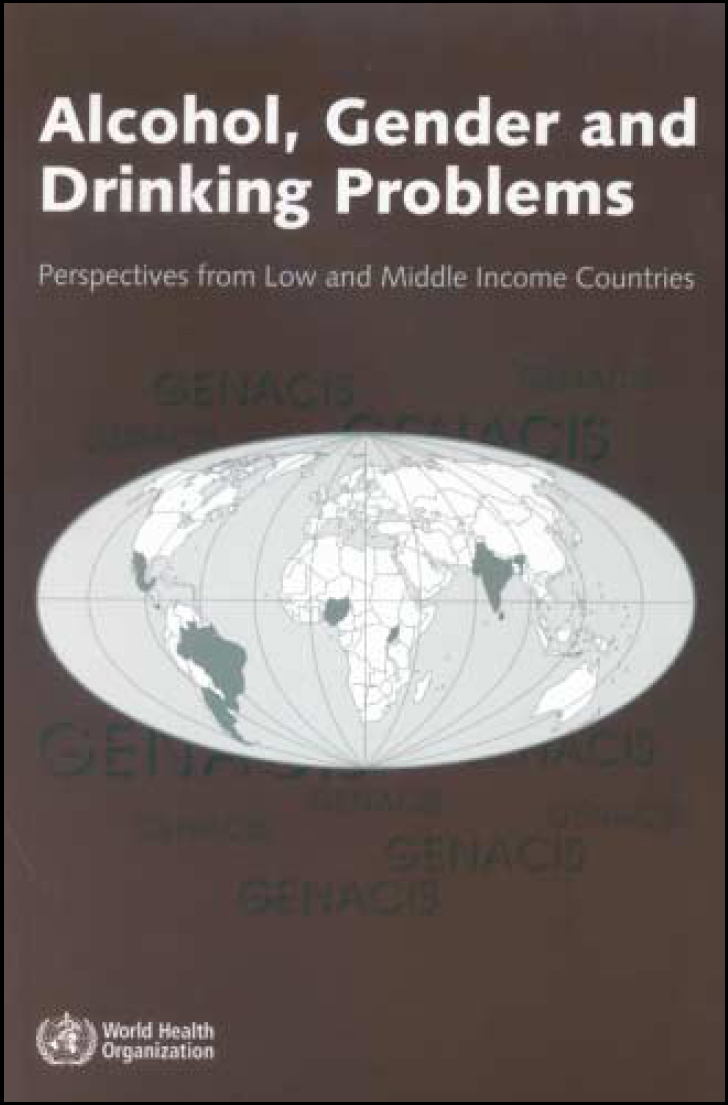
Alcohol consumption is enmeshed in social and cultural norms and problems relating to drinking can not be considered in isolation from these. Because the place of gender within social and cultural interactions is unique and has important ramifications for the behaviour and habits of men and women, this book addresses a topic of central significance to the consideration of how alcohol consumption may affect health, defined here in the broadest sense.
The book presents the reports of the project, ‘Gender, Alcohol and Culture: an International Study’ (GENACIS), conducted in Argentina, Brazil, Costa Rica, India, Mexico, Nigeria, Sri Lanka and Uganda. The first of its ten chapters provides an educative discussion of why it is important to examine gender differences in the use of alcohol. Chapters two through nine are reports of the project from the participating sites. Chapter ten attempts an integration of the main findings of the project. It shows that, when it comes to the use of alcohol, grouping of countries on the basis of development or region may be rather simplistic as the differences within these groupings are often large and complex.
Epidemiological evidence suggests that differences between males and females in regard to their use of alcohol are narrowing, with more recent birth cohorts showing closer similarities than earlier ones. Such narrowing of gender differences is probably more pronounced in low- and middle-income countries, especially those of Africa and Asia, where traditional restrictions on female drinking are beginning to wane as a result of various social changes, not least those related to urbanisation and globalisation. Anyone wishing to examine how social changes influence alcohol consumption will benefit from an understanding of the trend in gender patterning of drinking provided this book.
The book is enriched by the broad cultural contexts in which the studies were conducted. However, it has to be read within the constraints of the methodology of GENACIS. The focus of the surveys was on documenting gender differences in drinking patterns in the various study sites. Even though several of those sites used epidemiological approaches to sample respondents, and their results can be considered as representative of the regions where the studies were conducted, readers need to be aware that the data presented are not national profiles of drinking behaviour and are certainly not meant to highlight cross-national comparisons of alcohol use. What the book provides is a rich source of information about the dynamics of alcohol use in which the gender of those who drink and those who do not offers an opportunity for us to understand the social influences shaping trends in alcohol consumption. That information should interest policy makers across the globe.



eLetters
No eLetters have been published for this article.